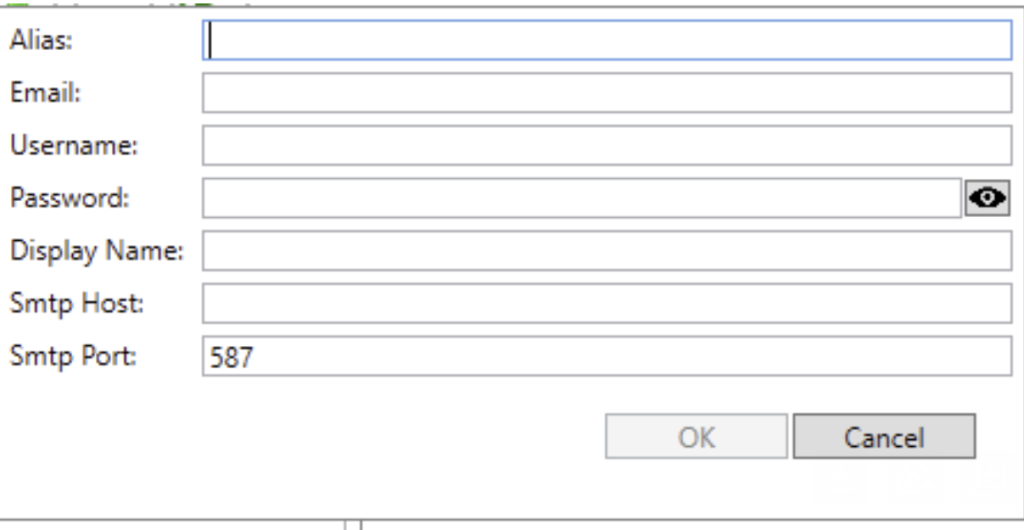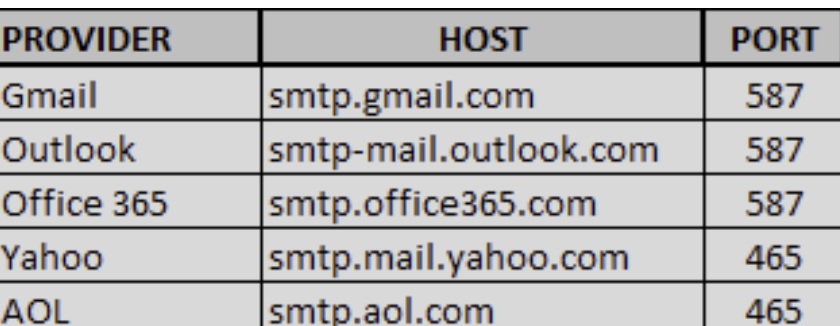
What if you could get clear, straightforward answers to your biggest HMI/SCADA questions? This week, we are taking a different approach—rather than our usual deep dives, we are addressing the most frequently asked questions about ADISRA SmartView.
But that is not all. This conversation has sparked something more significant: we’re hosting a live webinar on April 3rd at 8 AM CDT (Austin, Texas), where we will go even deeper and answer your questions in real-time. So, mark your calendar for this event and we will send out more information in the coming week.
Until then, let us explore the answers to the top questions we received this month from users worldwide.
“How does ADISRA SmartView’s Architecture work?”
In industrial automation, software architecture is more than just a structural design; it is the backbone that determines how efficiently and reliably a system operates. In HMI/SCADA solutions like ADISRA SmartView, the architecture governs how components interact, how data flows, and how the system responds to real-time events. A well-structured design ensures high performance, seamless scalability, and robust security while maintaining ease of use. For customers, this is not just a technical consideration but a critical factor impacting system reliability, operational efficiency, and long-term maintainability.ADISRA SmartView: Development and Runtime ArchitectureAt the core of ADISRA SmartView lies the tag database, a centralized hub for data exchange. Various system modules interact through this database or external SQL databases, ensuring smooth and efficient data handling.
The ADISRA SmartView framework consists of two primary environments:
1. Development Environment (Suite.EXE – Engineering Process)
The development environment, shown on the left side of the architecture diagram below, is a Windows-based interface where engineers configure and design automation applications. The Suite.EXE process includes editors for various modules, such as:
– Alarms & Events – Configuring notifications and responses
– Graphics – Designing user interfaces and dashboards
– Scripts – Automating logic and control functions
– Reports – Generating operational insights
– Rule-Based Expert System – Implementing intelligent decision-making logic for automated processes
Each module is seamlessly integrated, allowing engineers to build and fine-tune applications with maximum flexibility.
2. Runtime Environment (Runtime.EXE – Server Process)
On the right side of the diagram, the runtime environment represents the execution phase. The Runtime.EXE server process is responsible for running all automation functions, ensuring real-time processing and communication such as:
– Executing control logic and scripts
– Handling alarm triggers and event logging
– Generating recipes and reports
– Managing data flow between local and remote clients
– Running the Rule-Based Expert System – Automating complex decision-making using predefined logic and real-time data
The runtime environment supports Windows and Linux, making it adaptable for various industrial applications.

Client-Server Architecture: Flexible and ScalableADISRA SmartView operates on a client-server architecture, ensuring smooth communication between different components:
– The Server (Runtime.EXE): The core process that executes automation logic.
– Clients: Various interfaces that interact with the server, including:
– DataWatcher – For real-time monitoring
– Viewer (Local/Remote) – For operator control and visualization
– Web Client (Browser/Application) – For remote access via web-based dashboards
This architecture ensures that operators, engineers, and decision-makers can access critical data from anywhere, improving responsiveness and operational efficiency.
The architecture of ADISRA SmartView is designed to handle the complexities of modern industrial automation. A scalable, secure, and high-performance framework enables businesses to build efficient, reliable, and future-proof automation solutions.
“Are projects created in one version of ADISRA SmartView compatible with other versions?”
In the world of HMI/SCADA (Human-Machine Interface/Supervisory Control and Data Acquisition), compatibility between software versions is not just a convenience, it is a necessity. These systems are often deployed in mission-critical environments like industrial plants, manufacturing lines, and infrastructure operations, where even brief downtime can result in significant costs.
The answer is yes, projects created in one version of ADISRA SmartView are compatible with newer versions. When opening a project in a newer release, the system may prompt you to upgrade the project to align with the latest features, modules, and architecture enhancements.
However, please note that projects created in a newer version may not be compatible with older versions due to changes in the framework or added functionality. That is why we always recommend backing up your project before opening it in a different version.
Easily Create Project Backups
With ADISRA SmartView, your projects are protected automatically. Every time you open the application for the first time each day, ADISRA SmartView quietly creates a backup in the background, with no clicks required. Even if you open the application a dozen times and make multiple changes, ADISRA SmartView always keeps the 7 most recent backups so your latest progress is safe, secure, and easy to recover.
ADISRA SmartView also includes a manual backup option for extra peace of mind. To save a snapshot of your work, just click the Backup Project button in the toolbar. See the image below for where to find it.

When you click the button and choose a destination folder, SmartView creates a ZIP file using the format:
ProjectName_ActualDate.zip
Additionally, ADISRA SmartView automatically generates a backup the first time a project is run each day, saving the most recent version for added protection.
By default, backups are cumulative, helping you keep a running archive of project changes. You can add logic to your application to automatically manage the backup folder, such as deleting older files based on your retention policy.

Use the backup feature regularly before upgrading or making significant changes—it’s a simple step that can save time and protect your work. ADISRA’s commitment to our customers is to ensure backward compatibility, which allows customers to transition smoothly between versions, protect existing investments, and maintain the reliability and performance on which their operations depend.
“How Do I Connect Two ADISRA SmartView Servers to Share Tag Data?”
Having two instances of an HMI/SCADA package sharing data through OPC UA is a powerful strategy for various reasons, especially in large-scale industrial operations. The OPC UA standard provides a robust platform for seamless communication between multiple systems, ensuring interoperability and scalability. This is especially useful when multiple applications or systems need access to real-time data from the same source in a controlled and secure environment.
In ADISRA SmartView, it is easier than you think it is with OPC UA. In ADISRA SmartView, the OPC UA server and client are built right in at no extra cost.
By leveraging the OPC UA Client and Server features included with ADISRA SmartView, you can seamlessly connect multiple applications and exchange tag values in real-time. This solution is perfect for large-scale operations, distributed systems, or any setup where secure, reliable communication between different instances of ADISRA SmartView is needed.
How to Set It Up?
To exchange tags between two ADISRA SmartView applications, follow this architecture:
– Step 1: Application 1 (OPC UA Server) Enable the OPC UA Server in the project settings. Set the tag (e.g., TagA) with read/write OPC access.
– Step 2: Application 2 (OPC UA Client) Create a new OPC UA Client driver. Link TagA in Application 2 to the TagA on the server (Application 1).

You can use the same tag name in both projects—it helps keep things clean and intuitive. Just make sure you designate which project is the server and which one(s) are the clients.
Once connected, any changes to TagA in one application will reflect in the other, allowing for real-time synchronization across systems.
Is it a scalable architecture? Absolutely.
You are not limited to a one-to-one connection. The diagram below shows how one OPC UA Server can serve multiple clients, perfect for enterprise-level or distributed control systems.

“Can I get alarm messages sent straight to my phone?”
Yes, you totally can. And even better, you get to choose how you want them delivered.
With ADISRA SmartView, you can configure alarms to send instant notifications via email or WhatsApp. So, you are always in the know, whether on the factory floor, in a meeting, or out grabbing coffee. From temperature spikes to system faults and unexpected operator errors, you will be notified when they happen.

Getting Started with Email Alerts
Setting up email notifications is a breeze. Just head over to your Project Settings, hit the designated ‘Emails’ button, and a dialog will pop up (yep, that one) where you will enter:

– Alias – A friendly name for your email config
– Email – The address you’ll send from or receive to
– Username & Password – If your provider requires it
– Display Name – What shows in the “From” field
– SMTP Host & Port – The route your email takes to get there

We support secure connections too. Just note that some providers like Gmail or Outlook may require an app-specific password, but do not worry, we have got documentation that walks you through it step-by-step.
Want It on WhatsApp Instead? No Problem.

Sometimes, you need that instant ping—and ADISRA SmartView delivers. With WhatsApp integration via Twilio, you can have alarms sent directly to your phone as a WhatsApp message.
To set this up:
– Hit the ‘WhatsApp’ button in the Notifications ribbon
– Add your Twilio account info and the phone numbers you want to reach
It is a game-changer for operators, technicians, or managers who need to stay connected 24/7 without being tethered to a control room.
“Can I Display ADISRA SmartView Screens on a Large Monitor?”

Yes, you can, and it is a great way to communicate information throughout the plant floor. The large screen displays can be web servers or viewer clients. It is really up to what you would like to achieve.
Imagine walking onto the factory floor and seeing all your key production data, alarms, KPIs, and system statuses boldly displayed on a large ANDON screen—live, in real-time. With ADISRA SmartView, turning your HMI/SCADA screens into a dynamic visual hub is not only possible but also powerful.
Big screens are not just for boardrooms or sports bars. In industrial environments, they bring major advantages:
– Enhanced Visibility – Everyone on the floor can instantly see what’s happening
– Real-Time Monitoring – Alarms, metrics, and production status updated instantly
– Improved Communication – Keep your team aligned and informed at a glance
– Centralized Information – Display key dashboards, OEE, or alerts in one location
– Boosted Efficiency – Faster response times, fewer delays, and a more connected workforce
Whether mounted above a production line or placed in a control room, large-format displays running ADISRA SmartView become vital communication tools, helping you drive collaboration and responsiveness across your entire operation.
Want to see it in action? Check out this live demo here.
Let ADISRA SmartView power your ANDON screens and transform how your team sees and responds to production data.
Ready to see what ADISRA SmartView can do? Download ADISRA SmartView here and experience the power, flexibility, and control you have been looking for in your HMI/SCADA software.
Start building more intelligent, faster, and more connected industrial applications today.
Let’s Keep the Conversation Going
These are just a few of the many questions we get from users who are excited about what ADISRA SmartView can do and want to expand their automation capabilities.
Do you have a question we didn’t answer? Do you want to see something in the webinar? Please leave your thoughts in the comments below or email us at info@adisra.com.
Remember to mark your calendar for our live webinar on April 3rd at 8 AM CDT. It will be packed with real answers, insights, and real-time interaction.
See you at the webinar!
ADISRA®, ADISRA’S logo, InsightView®, and KnowledgeView® are registered trademarks of ADISRA, LLC.
© 2025 ADISRA, LLC. All Rights Reserved.
